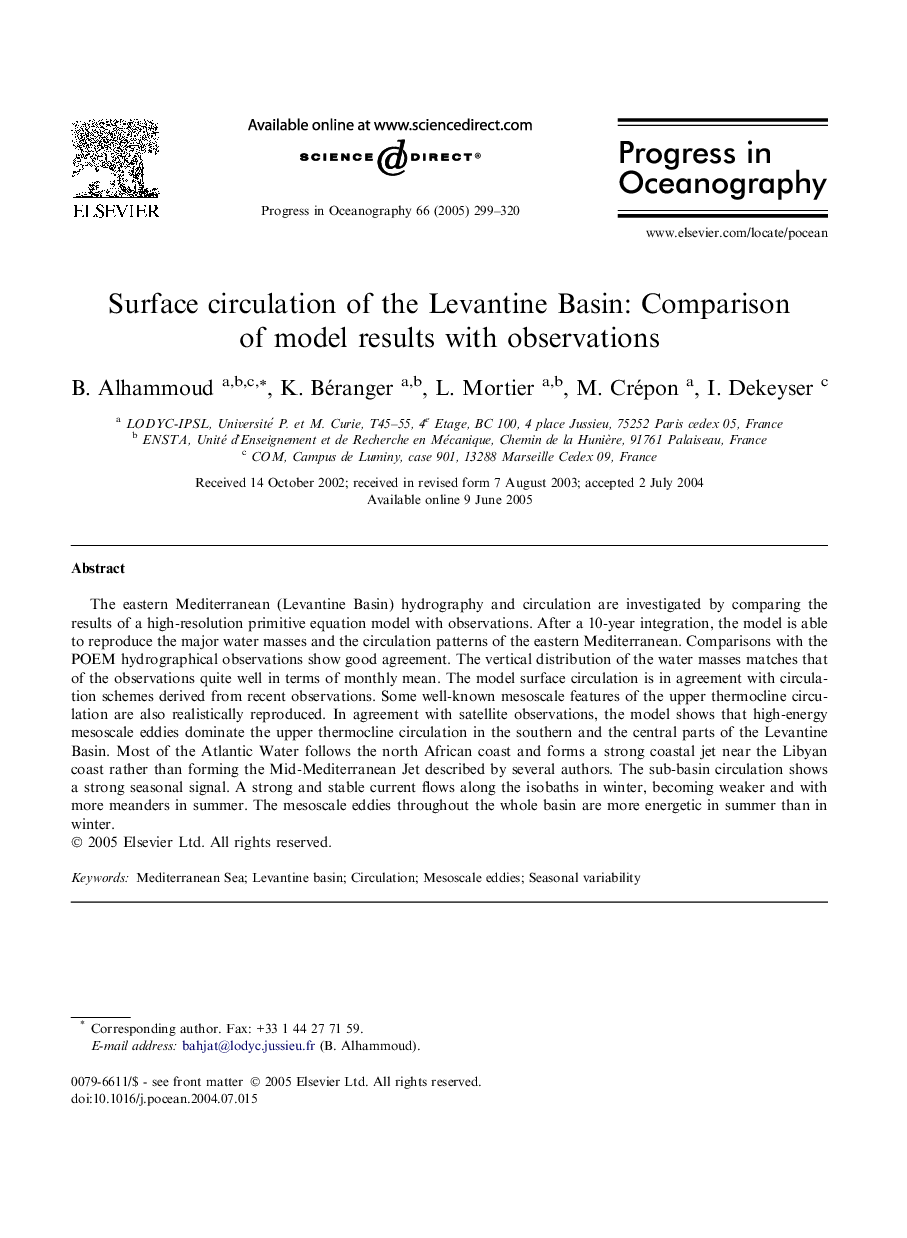| Article ID | Journal | Published Year | Pages | File Type |
|---|---|---|---|---|
| 9485181 | Progress in Oceanography | 2005 | 22 Pages |
Abstract
The eastern Mediterranean (Levantine Basin) hydrography and circulation are investigated by comparing the results of a high-resolution primitive equation model with observations. After a 10-year integration, the model is able to reproduce the major water masses and the circulation patterns of the eastern Mediterranean. Comparisons with the POEM hydrographical observations show good agreement. The vertical distribution of the water masses matches that of the observations quite well in terms of monthly mean. The model surface circulation is in agreement with circulation schemes derived from recent observations. Some well-known mesoscale features of the upper thermocline circulation are also realistically reproduced. In agreement with satellite observations, the model shows that high-energy mesoscale eddies dominate the upper thermocline circulation in the southern and the central parts of the Levantine Basin. Most of the Atlantic Water follows the north African coast and forms a strong coastal jet near the Libyan coast rather than forming the Mid-Mediterranean Jet described by several authors. The sub-basin circulation shows a strong seasonal signal. A strong and stable current flows along the isobaths in winter, becoming weaker and with more meanders in summer. The mesoscale eddies throughout the whole basin are more energetic in summer than in winter.
Related Topics
Physical Sciences and Engineering
Earth and Planetary Sciences
Geology
Authors
B. Alhammoud, K. Béranger, L. Mortier, M. Crépon, I. Dekeyser,
